Tarry Tours have come to Colombia:

Tarry Tours are Richard, Christoph, Tony and myself.
We have been successful travel partners since our first venture to Mexico in 2017.
Since then the four of us have visited Thailand, Laos and Cambodia – Ecuador and Peru – and Madeira – twice.
Good wintering places.
Richard and I are childhood friends. I was 5 when I met him and he was 7. Our families were staying in an hotel in Kloof, Natal back in 1957; both families had moved there from Cape Town and Johannesburg and were waiting to move into new homes.
Our fathers worked in Durban.
We grew up in what is now KwaZulu-Natal and have remained friends ever since.
He is a Wallace-Tarry and that is why I call our group Tarry Tours. Richard has enabled much of our travel through the Home Exchange Programme, a wonderful way to live in foreign places for nothing and there have been some handy homes in Playa del Carmen, Quintana Roo, Oaxaca – both in Mexico, Chiang Mai in Thailand, Quito in Ecuador to name a few.
And now we have come to Colombia.
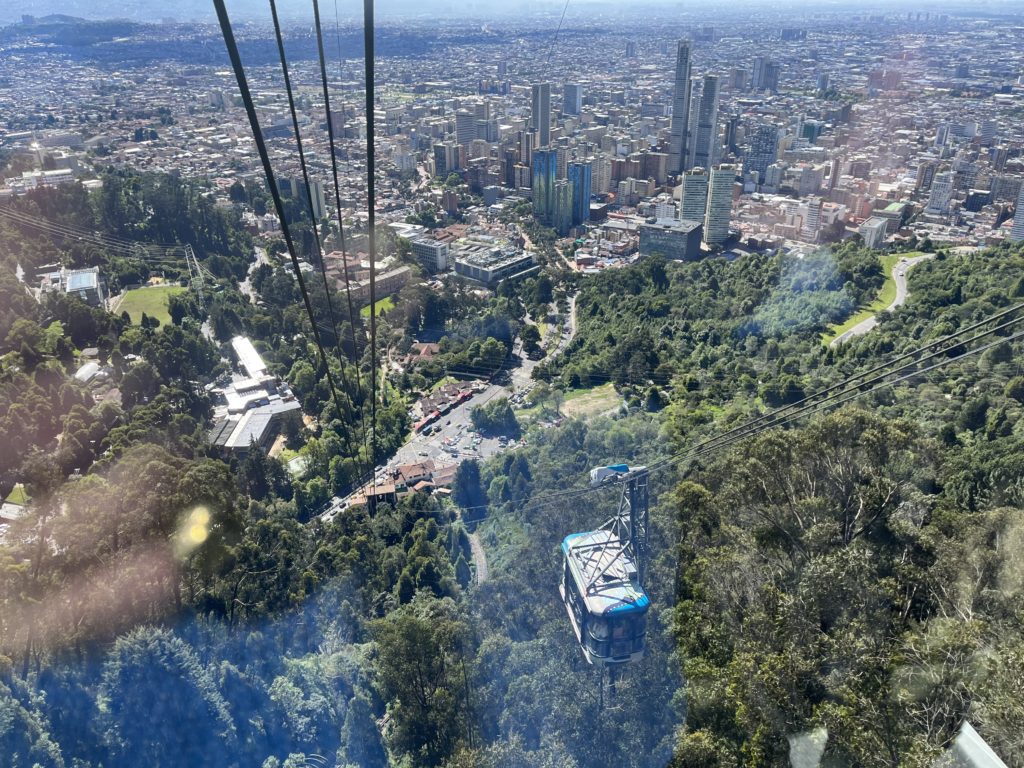

Richard lived and worked in Bogotá for several years back in the 80’s teaching maths in a private school there. He speaks excellent Spanish. Tony speaks a little Spanish too which has made our Latin American travels much easier. Christoph – from Berlin – and I are useless in the language. I am the most useless of all having nothing more than a smattering of Afrikaans!
Plaza de Bolívar
Christoff speaks lots of languages, in the European way, but not Spanish.
First stop Bogotá:
I had no idea it was so big. The metro area is almost the same as London containing 12 million inhabitants; it’s high too at 8,660 feet. After my second bout of Covid last year my lungs have never recovered and at this height the dreaded soroche (altitude sickness) has slowed things down a lot.
Friends! Lots of you have said, “What on earth do you want to go there for anyway?” Certainly there is poverty, crime and gridlocked traffic; drab neighbourhoods, and the weather can be dreary – wet and rainy. None of these seem to have appeared on our radar from our base in La Candelaria with it’s colonial architecture, numerous restaurants and music of all kinds blaring out.
The weather has been glorious: sunny, blue skies and cool nights.
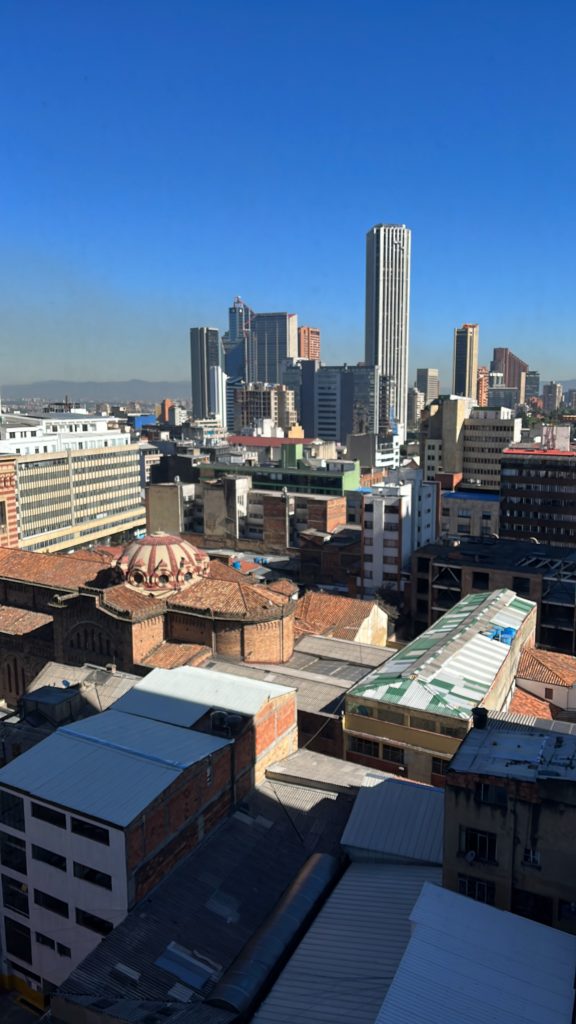
View from our 13th Floor hotel room.
It’s a grubby city but a laid back and friendly one too. Besides if you visit this country there is no avoiding Bogotá. It is a hub.

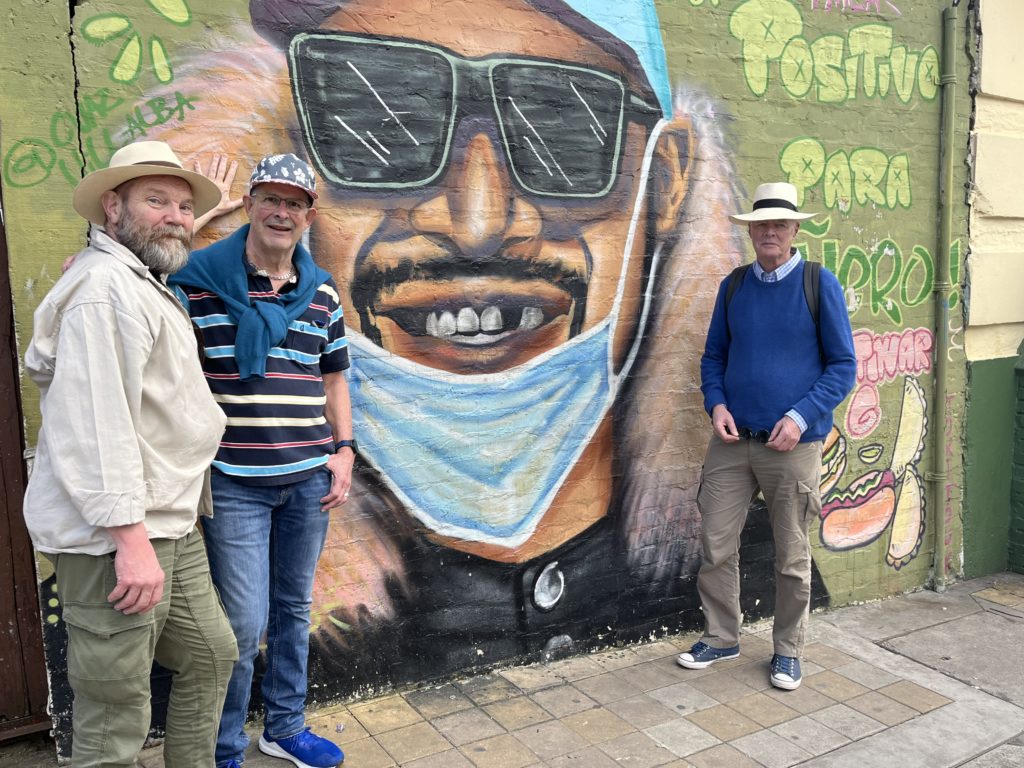
We confined ourselves to La Candaleria and only ventured forth to the northern suburbs where the rich and famous live in the Zona Rosa, once.
The city backs onto the Cerro de Monserrate, a mountain ridge topped by a church which can be reached by funicular and cable car whence are afforded spectacular views all around.
It is a great setting for this historic city.
La Candelaria centres on the Plaza de Bolívar dominated by the cathedral, the Palace of Justice, the National Capitol and the Palacio Liévano. Much history played out here, some of it bloody. ‘Chequered’ is a good word to describe Colombia’s history. Fraught with civil wars, revolutions, guerrilla movements, drug wars and the actions of Imperial Spain and its surrogate the Catholic Church, it is a complicated one to follow – like the histories of most of Latin America and, indeed, all the Americas north, central and south.
We Europeans certainly have a lot to answer for!

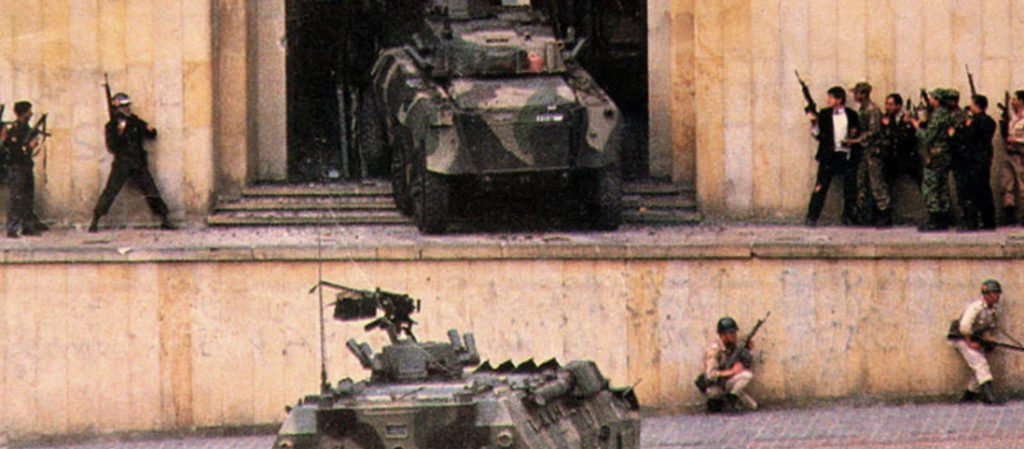
So we headed for the museums to have a lot of what we think and feel, confirmed.
There is a plethora of museums and galleries and we visited several but were most impressed by the Museo del Oro (Gold Museum) and the Museo Botero, a gallery dedicated to the works of Fernando Botero and his personal collection bequeathed to the nation.
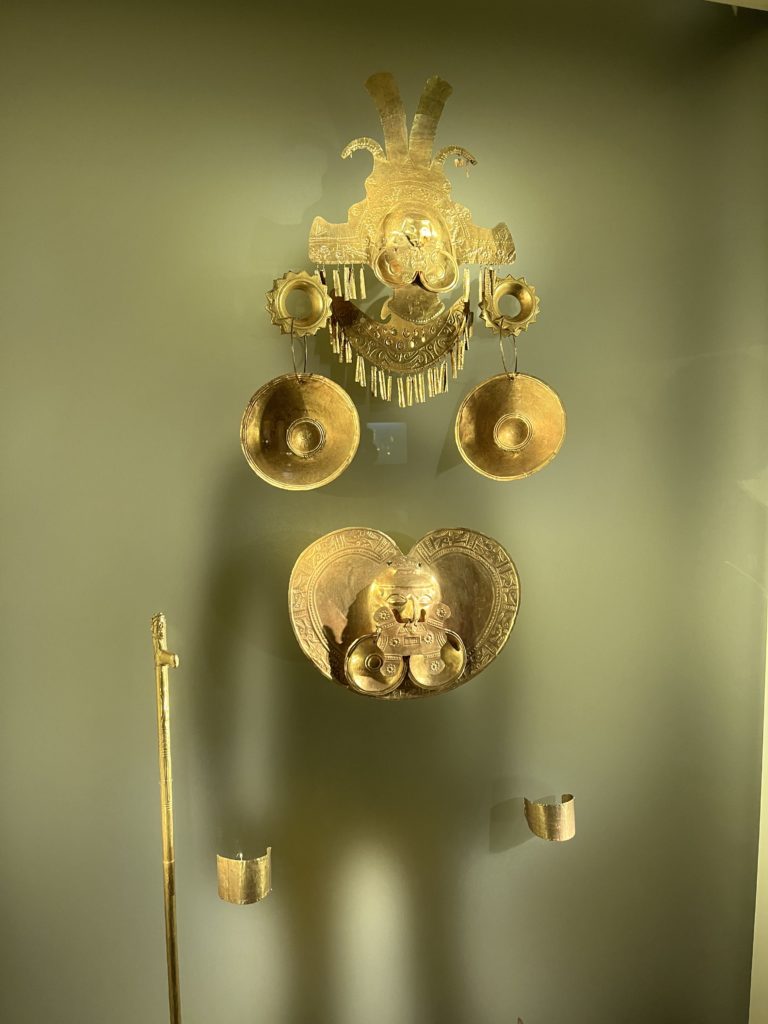
The Gold Museum is a staggering collection of at least 55,000 gold, silver and platinum pieces, the world’s biggest collection of gold ornaments, charting the history of metallurgy in pre-Hispanic Colombia. It was this that urged the Spanish Conquistadores on in their greedy quest for El Dorado and its terrible consequences on the native Indian cultures that dominated here once long before Europeans arrived. The museum sadly does not chart these consequences and only records and displays the achievements prior to our arrival. For that you have to visit other historical and cultural museums which rather gloss over the sharp end, shall we say, of the imperial incursion.
There is a great deal of blood and horror. It is shameful. But the museum is brilliant.
The Museo Botero was the other exciting gem. Well, it’s more than just a gem! I had no idea how prolific this artist was nor that he possessed such an eclectic and finely balanced collection of major artists. Here are Cézanne, Courbet, Bacon and Auerbach. There are too, Pissarro, Monet, Toulouse-Lautrec, Renoir, Picasso. An enormous collection, this is turning into a list but, hey, I can’t

stop now: Miró, de Chirico, Delvaux, Braque, Chagall – nearly finished – Freud, Henry Moore, Klimt, Dégas and Matisse. Phew!
Paintings and sculptures. Many of his own works are homages to certain artists executed in his own particular style.

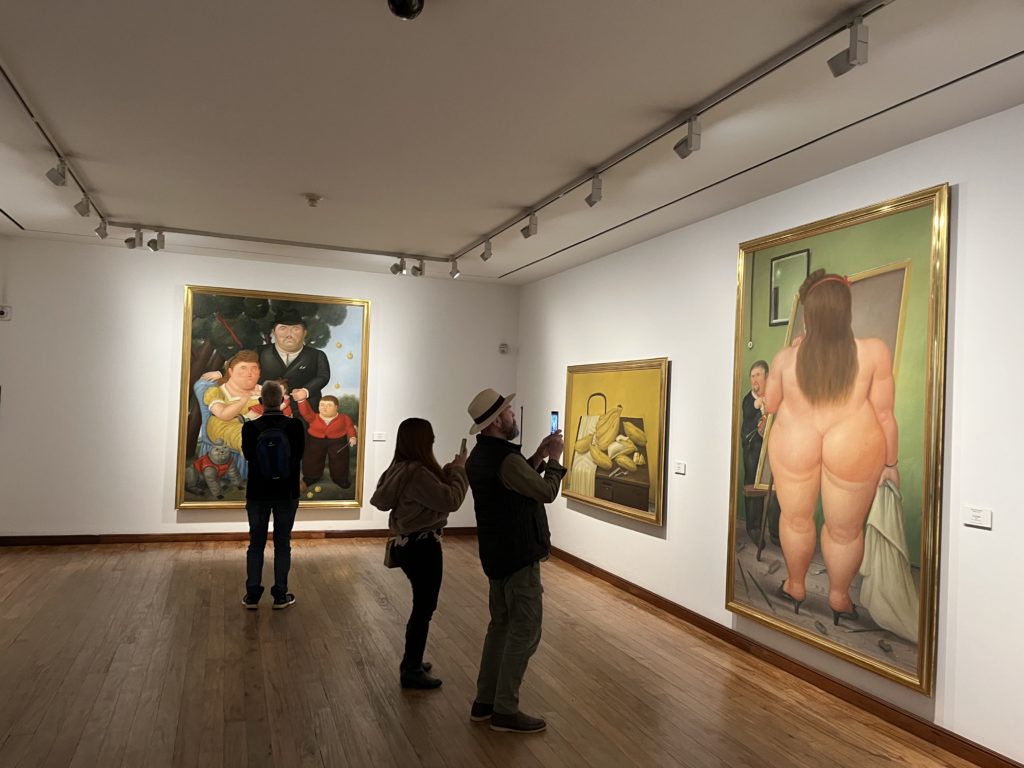
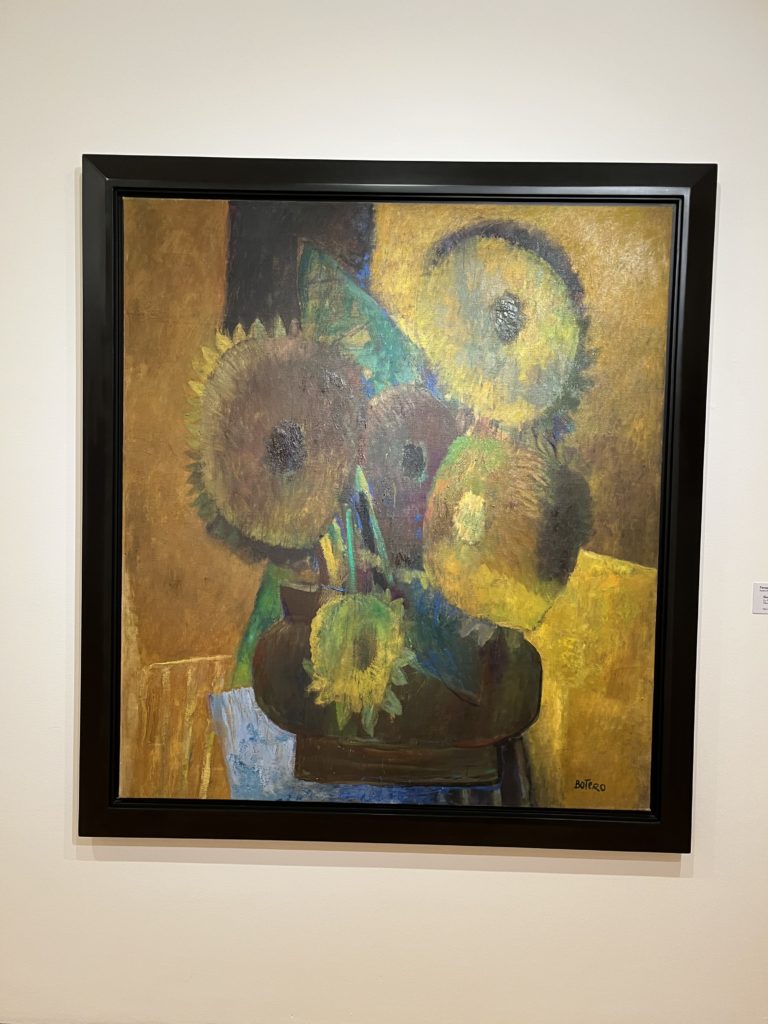

The collection is housed in a colonial mansion three blocks up from Plaza Bolívar but there is a modern annexe at the back housing the Museo de Arte del Banco de la República where largely contemporary Colombian art is displayed, ranging, though, from 17th Century religious art through to modern canvases. Another gallery attached houses contemporary, temporary, largely installation art works. Very edgy. I never understand them but still, interesting.
This is one of the best museums I have ever seen and certainly along with gold, the other best choice for us here in Bogotá.

There were other museums including the rather quaint Instituto Cultural León Tolstoi which seemed to be a hangout for aged Communists! Started in 1944 and heavily subsidised by the Soviet Government, it was meant to foster cooperation and cultural exchange but seemed keen to promote pre-revolutionary culture as much as Marxist dogma. We asked if there were still any Communists left in Colombia but received evasive answers. How it has survived the right wing era from 1948 through all the troubles, dictatorships, juntas and the powerful oligarchs is amazing.



Next, to San Agustín, a 90 minute flight to the tiny airport at Pitalito, in a twin engined ATR 42-500 (please note Friend William S!), for a 45 minute taxi transfer to our EcoHotel Masaya at 5,404 feet. Spectacularly perched on the edge of the huge gorge gouged over millennia by the Magdalena River.


Lower than Bogotá and breathing slightly easier.
At 1,528 kms the Rio Magdalena is Colombia’s longest and most important river; running south-north, it debouches into the Caribbean at Barranquilla. I had no idea this country was so big. Getting around it is not easy. Traffic is terrible and the road network entirely inadequate while the terrain is not easy either. Many of the roads are reminiscent of some of the worst we encountered in South Africa last year – potholed and prone to the mudslides endemic in this region. More of that later.
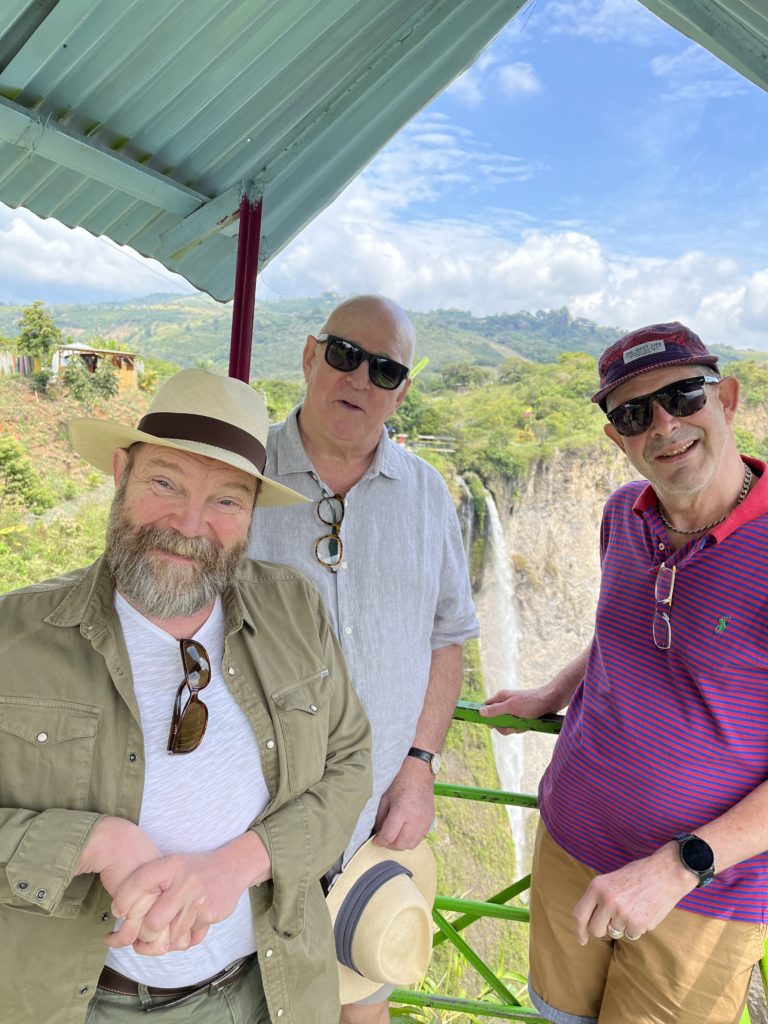
But – San Agustín:
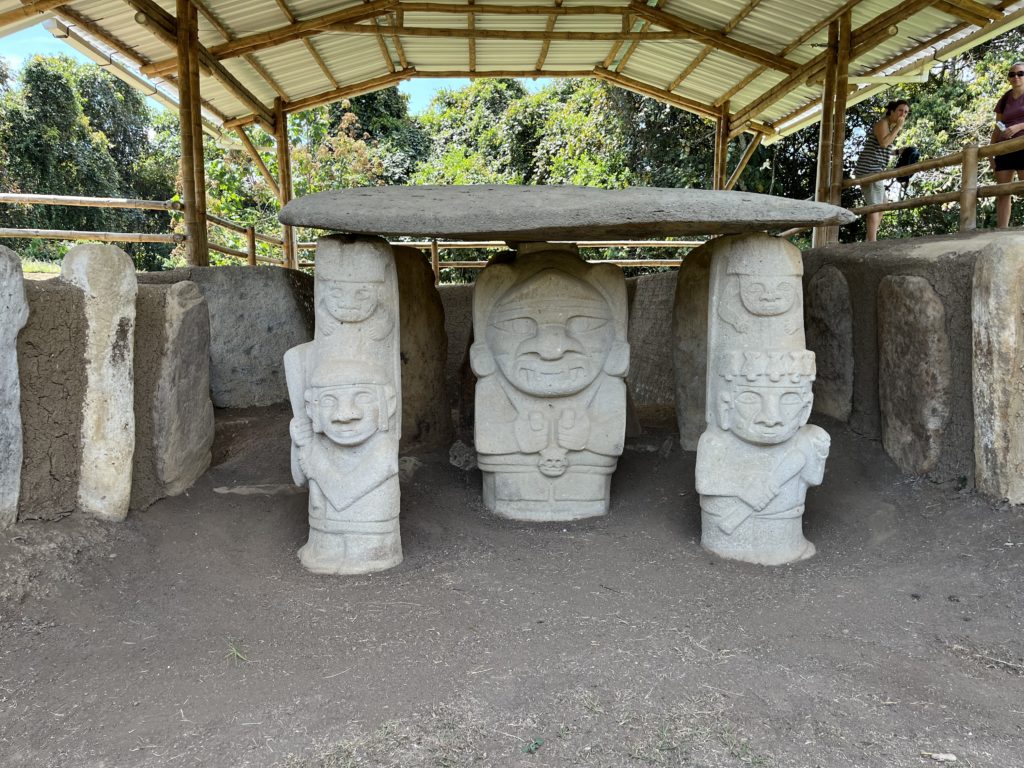
It’s not much more than a large village founded round the Catholic Mission School in 1608. But long, long before this, in at least 1000 BC, there were a people living here about which we know absolutely nothing other than that over the centuries up to round 900 AD, they started making their tombs with large stone statues adorned with grinning mouths,
pointed fangs, birds eating snakes and huge round eyes. These are today contained within the Parque Arqueológico Nacional de San Agustín containing three definite Mesitas, A, B & C containing concentrations of tombs constructed across several millennia and about which we can only surmise. There are many theories and our lovely guide, José Adrian (I kid you not) Cordoba,
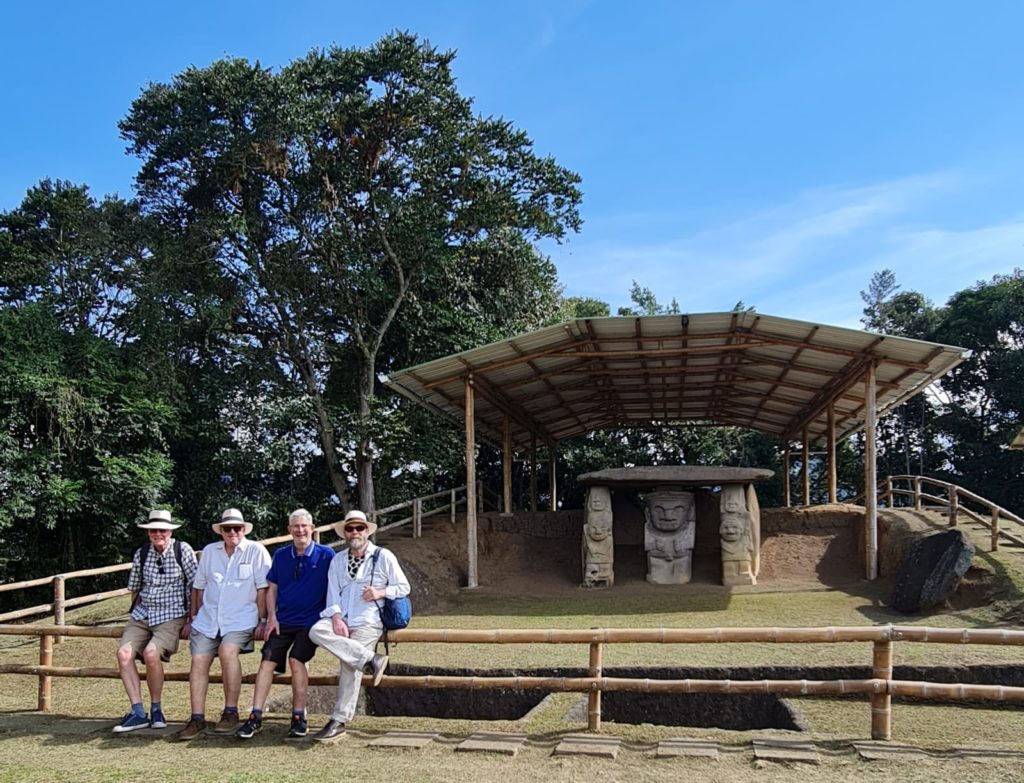
was happy to supply us with any number of these while admitting that it is a mystery as to how a largely hunter-gatherer community without access to sophisticated tools of any kind were able to lift the enormous stones, often weighing many tons, carry them up from the bottom of the Rio Magdalena gorge whence they originate, deposit them on the required sites, sculpt and shape them and place them on the levelled mesitas in specially created underground caverns – no decent digging implements, no blocks-and-tackle, no written language and no evidence of sedentary farming even, or any sort of economy to back up the endeavour.



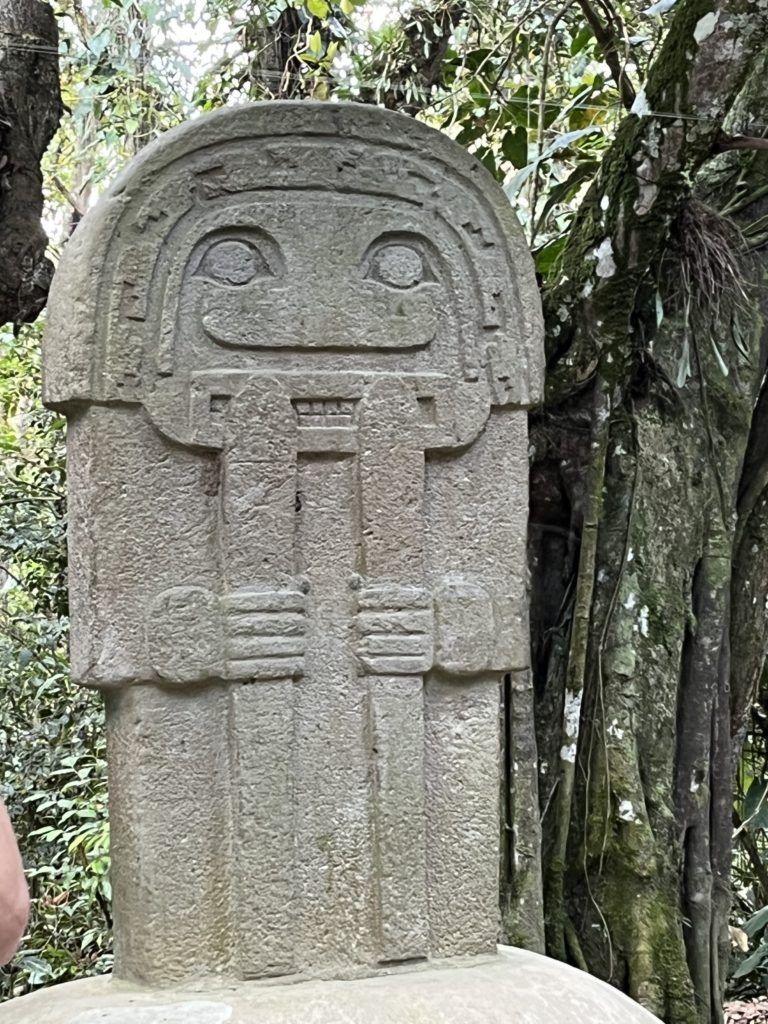
We have been to many archeological sites all over the world, in Peru, in Mexico and Egypt; to Angkor Wat, Petra and Ecuador, Stone Henge and others – menhirs and dolmens propped in peculiar places but never to a site where absolutely nothing is known of either the coming or going of a whole people.
On our last day Adrian, as we liked to call him, moved me much by saying that it was evident that whoever they were, material wealth appeared to mean nothing to them and that the spiritual intention of these sites and their emphasis on a natural balance in the world between nature and man, a knowledge of this balance, was the most important thing of all. Adrian was once part of the business world in Bogotà where he worked successfully for Microsoft but suffered an early crisis, giving up a lot of his material obsessions, returning to a simpler life at this time of environmental crisis. Perhaps, he said, we have something to learn from these tombs and the sculptures in them.
San Agustín. A special place.
Next time, dear Friends, Popayan, Villa de Leyva and Mesitas. Plus THE ROADS!
No exams this time Friends. There will be three modules before the next tests.

I was wondering where you were! Happy travels!
Brilliant. Thanks.
Dear Peter & Tarry Tours. Looks fantastic and you manage to capture so much information. We loved Bogota especially the Museo Botero. They had especially good food in their little cafe.
Did you also go to the Salt Cathedral along with all the other places. We were so impressed with Bogota as everyone had said ‘why go there’? We are currently in Singapore having been in Obud in Bali for two weeks. The hotel ‘The Ibah’ was for me the most exquisite place nesting in a ravine in the rain forest. The Green will be welcome but not quite the same. Looking forward to hearing about your journey if we can get out of our front door!
What an interesting travelogue Peter. I certainly look forward to the next. South America is the one continent I’ve never been to and always wanted to.
Noted, read as I sit on a huge A380 waiting to leave Heathrow. Quite different from an ATR turboprop.
What a wonderful trip this sounds, dear Peter! Look forward to seeing you both before too long and hearing more about it. (We have been in Vietnam, Cambodia & Laos and are in Bangkok now en route for home). Much love to you both, Carey and Gary x
I love travelling vicariously through you and Tony. Thank you for going to places that I would never be able to get to and for reporting so eloquently about what you see and do. Many hugs, and much love.
Jerrifulah xx
wow, that is all stunning. surprising and very tempting
Hello Tony and Peter,
You took me back to happy days in Latin America ( not Bogotá sadly) but the flavour and music and mix of culture. Thank you. beautifully scripted – I can hear your wonderful resonant voice. Peter.
Is your friend Christoph the tall slimmer chap and your childhood chum of Larry Tours the one with the beard?
Also I am going alone to Sienna in April. Any good places you can recommend for an old bird like me to visit?
Thanks darling. Sienna ? We have never been there so I can’t help you I’m afraid.